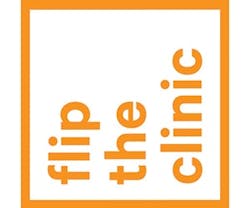It’s easy these days to look around at systems that have been in place for decades and find that a change is needed, then immediately begin to think of how to transform it all seemingly overnight, becoming overwhelmed with the idea. But for Whitney Bowman-Zatzkin, founder of Rare Dots, director of Flip the Clinic, and i+s’ Design Connections Healthcare keynote speaker for 2017, changes to how we provide and design for healthcare starts with simple adjustments.
“Part of Flip the Clinic’s commitment when we work with sites is to find really small, incremental things that make [significant] differences,” she said. One quick-fix example: “Reworking intake paperwork. It doesn’t sound like a huge, rocket-science, sexy thing, but when you can take a four-page form, rework the repetitive nature of copy-pasting the form from whomever wrote it in the first place, and get it down to maybe one page or two pages, that’s a huge change in tone-setting in a practice.”
The ways in which Bowman-Zatzkin embarks on scientific exploration every day tie directly to the impact design has on those who inhabit a space. “Whenever I talk to folks in interior design, I like to use what the film industry says: When a musical score is at its best, you know that it was excellent, but you don’t [realize] that it was there,” she explained. “If we’re pursuing some sort of human capital change inside the healthcare system or process or protocol, none of it really matters if the environment and the atmosphere aren’t perfectly tuned to allow the exchange to happen. One of our favorite things to do is to ask [designers] to stop and sit in a waiting room for 15 minutes and see what happens.” The surroundings typically evoke frustration.
One example from Bowman-Zatzkin stands out because we see it so often, particularly in popular culture, that it seems like a given: the scene in every movie where hard medical news is being delivered by a clinician who is separated from the frightened patients by a massive, presidential desk as they sit in the two chairs opposite, surrounded by certificates lining the walls. “How can [designers] make that a more welcoming environment for the conversation that needs to happen?”
she asked. “My main takeaway would be to find ways to make it feel like home, and then recognizing the role that design has in promoting good habits, like encouraging more walking. There’s tons of research on the tiniest [enhancements to] walking in a person’s day; we’re talking massive health benefits. What can you be doing to enhance that [experience] so a person doesn’t even realize that they’ve accidentally found themselves in a space that encourages 10-percent more walking a day?”
Of course, while the industry is seeing an overall shift toward wellness-centered spaces from public libraries to private offices, it can be difficult to convince a client to break from the norm and embrace changes. Within her work with designers, Bowman-Zatzkin has found two ways in particular that clients have been persuaded to put the extra cost into creating a more wellness-focused space: building the addition into the design—as with installing artwork into the walls so it isn’t an afterthought that is easily cut in an effort to slash the budget—and having designers go to meetings armed with the reasons a more expensive yet effective product is worth the cost. “Any chance that you can take to be more evidence-driven in recommending a product or materials, and why, will help sway the client.”
In the end, no matter if you’re working with a clinic or a commercial office building, designing with purpose will lead to more wellness-conscious locations. “Recognizing the [users] that are served in a space, and finding a way to connect with them, can offer some really great things,” Bowman-Zatzkin noted.
Photography courtesy of Flip the Clinic
About the Author

Kadie Yale
Former Editor-in-Chief
Kadie Yale holds a BA in Industrial Design from San Francisco State University and a MA in Decorative Art History and Theory from Parsons the New School. In her role as editor-in-chief from 2015-2018, she led the interiors+sources team in creating relevant content that touches on sustainability, universal design, science, and the role of design in society.
